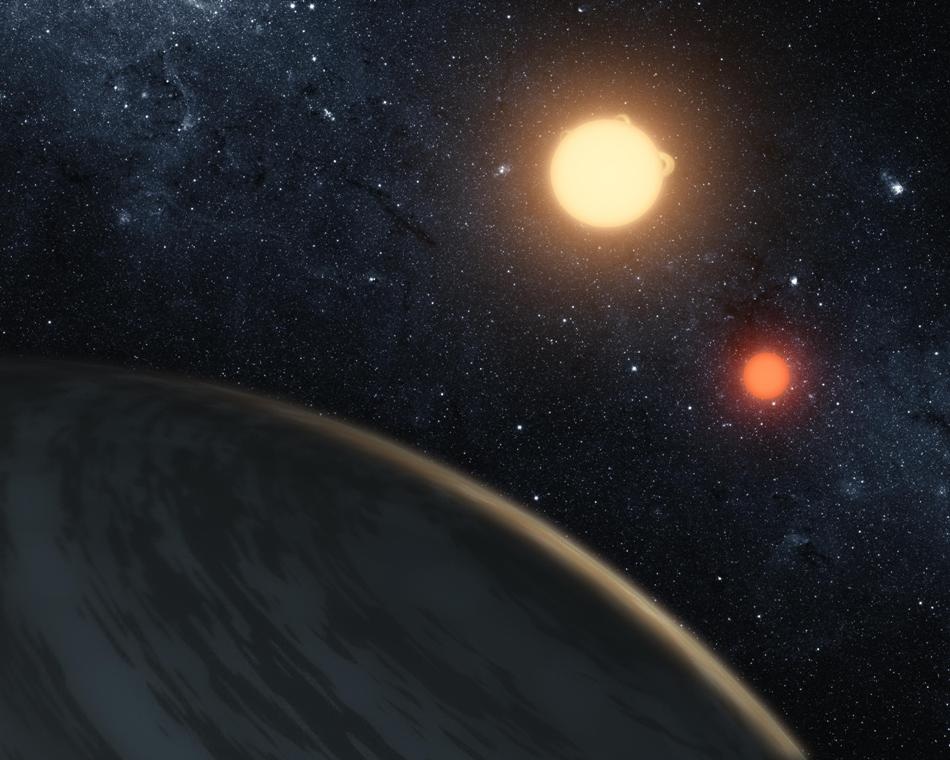Apr 25 2018
A study by astronomers Chris Lam and David Kipping indicates that artificial intelligence has now given new hopes to researchers in investigating the habitability of planets. Their study relates to the so-called “Tatooines” and involves the use of machine learning methods to calculate the likelihood of such planets in surviving in stable orbits. The research has been reported in the Monthly Notices of the Royal Astronomical Society journal.
 Artist’s impression of Kepler-16b, discovered by NASA’s Kepler mission and the first confirmed circumbinary planet. It is a gas giant that orbits close to the edge of its binary system’s habitable zone. (Image credit: T. Pyle/NASA/JPL-Caltech)
Artist’s impression of Kepler-16b, discovered by NASA’s Kepler mission and the first confirmed circumbinary planet. It is a gas giant that orbits close to the edge of its binary system’s habitable zone. (Image credit: T. Pyle/NASA/JPL-Caltech)
Quite similar to Tatooine - a fictional planet in the Star Wars series - circumbinary planets are those that orbit two stars in the place of just one. Thus far, tens of these planets have been discovered; however, it might be challenging to analyze whether or not they might be inhabitable.
When a planet revolves around two stars in the place of just one, it can result in significant changes in its orbit, indicating that it is usually either totally ejected from the system, or violently crashes into one of its twin stars. Conventional strategies for calculating which one of these takes place for a given planet get considerably more complex once the extra star is taken into account.
When we simulated millions of possible planets with different orbits using traditional methods, we found that planets were being predicted as stable that were clearly not, and vice versa.
Chris Lam, Lead Author & Recent Graduate of Columbia University
It is essential that planets survive for billions of years to ensure the evolution of life; therefore, detecting whether or not orbits are stable is highly significant for inhabitability. The innovative study demonstrates the ability of machine learning to make precise predictions even when the standard strategy—based on Newton’s laws of gravity and motion—fails.
“Classification with numerous complex, inter-connected parameters is the perfect problem for machine learning,” stated Professor Kipping, supervisor of the study.
Following the creation of 10 million hypothetical Tatooines with varying orbits, and simulating each one to perform investigations for stability, the large training set was fed into the deep learning network. Within a time frame of only a few hours, the network could out-perform the precision of the standard strategy.
NASA’s Transiting Exoplanet Survey Satellite (TESS) mission is anticipated to discover more circumbinary planets, and Lam anticipates their study to be supportive: “Our model helps astronomers to know which regions are best to search for planets around binary stars. This will hopefully help us discover new exoplanets and better understand their properties.”